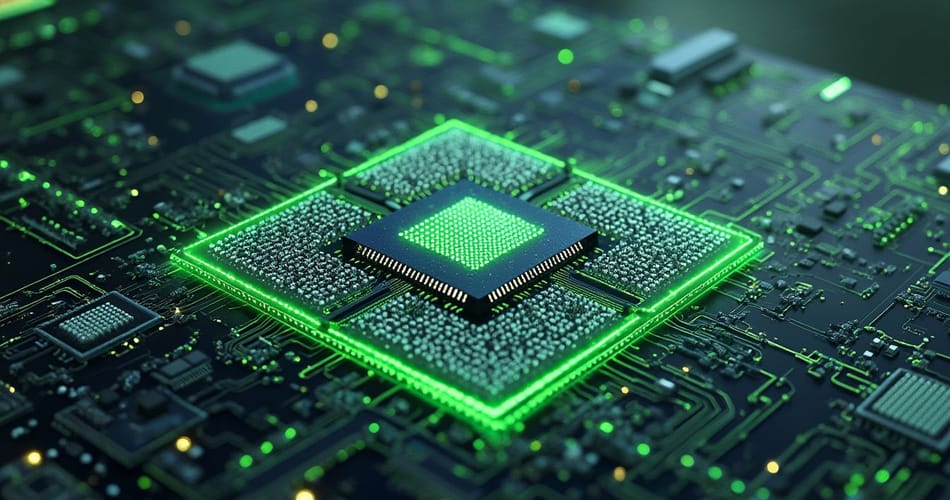1. Business Model and Economic Moat
NVIDIA, a titan in the realm of semiconductor companies, has carved a niche for itself through its robust and diversified business model. Primarily known for its GPUs (Graphics Processing Units), NVIDIA has leveraged these components to excel in diverse markets such as gaming, data centers, and the burgeoning fields of AI and autonomous vehicles.
Core Business Segments
- Gaming: Traditionally NVIDIA's largest revenue segment, catering to both the high-end consumer market and professional gaming industries.
- Data Centers: The flagship AI chips like the A100 and the recently announced H100 have propelled NVIDIA to dominance in this space, especially in AI and machine learning applications.
- Professional Visualization: Serving areas like CAD professionals and digital content creators.
- Automotive: Manners in autonomous vehicle development, providing platforms for AI-driven innovation.
NVIDIA's business model thrives on the continuous development of proprietary technologies that provide distinct competitive advantages. This includes the CUDA programming platform and its dominance in AI infrastructure.
Economic Moat
NVIDIA’s economic moat can be largely attributed to its technology leadership, brand recognition, and an extensive ecosystem of both hardware and software solutions. The CUDA platform in particular has seen widespread adoption among AI researchers and developers, making it a significant barrier for competitors to breach.
2. Moat Analysis: Threats and Potential Displacement
Despite its formidable position, NVIDIA's moat faces potential threats from several fronts:
Competitive Threats
- UEC and Industry Collaboration: With companies like AMD, Intel, and Microsoft forming the UEC (Universal Ethernet Consortium), there is a push towards open-source connectivity solutions, which may gradually erode NVIDIA's proprietary InfiniBand technology. NVIDIA's own inclusion in this consortium signals both a defensive strategy and an acknowledgment of shifting industry pressures.
- Rise of Custom Silicon: Major tech companies like Google and Amazon are investing in developing custom chips tailored for specific workloads, particularly in AI.
- Emerging Competitors: Asian tech giants such as Huawei and domestic counterparts could leverage government backing and local market knowledge to compete on price and innovation.
Risk Analysis
While the UEC consortium poses an immediate risk by challenging some of NVIDIA's proprietary technologies, the company's ability to swiftly adopt and integrate these standards could mitigate the threat. However, the broader risk remains the fierce pace of innovation in AI hardware, where newcomers backed by sufficient resources can disrupt existing paradigms.
3. Future Profitability and Cash Flow
NVIDIA's future profitability appears robust, underpinned by various growth sectors. The explosion in compute-intensive applications continues to favor its high-performance chips.
Financial Metrics
- PE Ratio and Price-to-Book Ratio: NVIDIA's current PE ratio reflects its growth expectations, hovering around significant multiples due to investor confidence in its future earnings.
- Revenue Growth: For 2024, NVIDIA is estimated to achieve a significant revenue increase, bolstering investor sentiment.
- Cash Flow Stability: Strong operational cash flows provide NVIDIA flexibility in R&D and strategic acquisitions.
Industry Outlook
With increasing demands for computing power across AI, machine learning, and data processing, the thirst for NVIDIA's technology will outpace current supply for years to come, providing a firm demand base.
4. Leaders and Corporate Culture
NVIDIA’s leadership, especially its CEO Jensen Huang, is instrumental in the company’s innovative culture. Under his direction, NVIDIA has been a trailblazer in tech trends while maintaining a focus on sustainability and long-term strategic goals.
Corporate Vision
The company fosters a culture of continuous learning and innovation, allowing it to swiftly adapt to changing market conditions and foster talent capable of maintaining its technological edge.
5. The Longevity and Sustainability of NVIDIA’s Moat
Sustaining Advantage
NVIDIA has demonstrated agility in pivoting technologies and markets, evidenced by its recent moves in joining UEC. To sustain its moat, NVIDIA will need to continue heavy investments in innovation, particularly in AI and cloud processing, ensuring their tech remains indispensable.
Long-term Forecast
Looking five to ten years ahead, NVIDIA’s leadership in AI and GPU markets suggests a favorable trajectory. That said, vigilance is required in managing threats from new tech paradigms and regulatory challenges.
"In the rapidly evolving silicon and semiconductor landscape, NVIDIA stands resilient, but must continue adapting to maintain its competitive edge."
Conclusion
In essence, NVIDIA enjoys a strong market position with a robust economic moat driven by innovative prowess and strategic leadership. While it faces potential competitive threats, particularly from open-source consortiums like UEC, NVIDIA's ability to integrate these developments into their ecosystem will be crucial for maintaining dominance and growth. With solid financial health and an industry-wide demand far exceeding current capabilities, NVIDIA is set to remain a formidable player in the tech landscape.
AI AND GPUS, NVIDIA, INVESTMENT ANALYSIS, JOURNAL, ECONOMIC MOAT, FUTURE PROFITABILITY, COMPETITIVE THREATS
